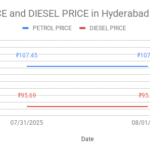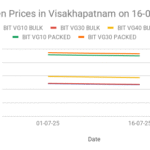By Srinivas Chowdary Sunkara // petrobazaar // 24th March 2020.
PETROL DIESEL PRICE TODAY IN INDIA
DIESEL PETROL PRICES
In India, Diesel and petrol prices are changed daily in line with a rise and fall of global oil prices. Following the daily price revision of auto fuels in India, Diesel oil and petrol prices are unchanged across India for last eight days. In Hyderabad, Petrol is being sold at Rs.73.97 and Diesel at Rs.67.82 a liter today in Hyderabad retail market. In Delhi, Petrol is priced at Rs.69.59 and diesel at Rs.62.29 per liter. In Kolkata, Petrol is now selling at Rs.72.29 and diesel at Rs.64.62 a liter. In Mumbai, Petrol and diesel are costing Rs.75.3 and Rs.65.71 respectively. Petrol pumps are charging Rs.72.28 and Rs.65.71 per liter respectively in Chennai.
BIODIESEL PRICE
Biodiesel prices are bench marked with diesel prices in Indian retail market. The retail prices of bio diesel remain unchanged today and trended to follow the changes in diesel prices in India. Bio diesel B100 and B50 graded fuel prices are sold at competitive prices by the dealers in Hyderabad retail market.
Disclaimer: Views and opinions expressed here are personal. This commentary is for information purposes only and not an offer or a solicitation to sell or buy any physical commodities or financial instruments. The views and analysis are based on reliable public information available at the time of writing. This report and its content cannot be copied, redistributed or reproduced in part or whole without the prior written permission of petrobazaar.com






